Da Vinči karamašīnas13
23
5
sorry ka nav iztulkots, mūsdienās jāzin angļu valoda :)

Leonardo Da Vinci’s mechanical knight was not discovered until 1957, when Carlo Pedretti discovered it, hidden amongst Da Vinci’s countless designs. The mechanical knight, first sketched by DaVinci in 1495, was mentioned in 1974, in the Codex Madrid edited by Ladislao Reti, but there was no attempt to reconstruct it until 1996 when Mark Rosheim published an independent study of the robot, followed by a joint enterprise with the Florence Institute and Museum of the History of Science.
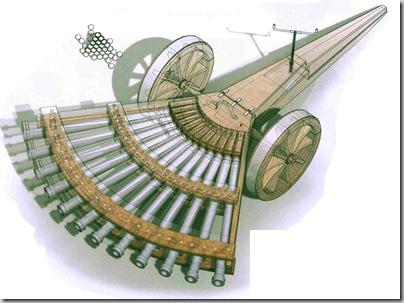
The multi-barrelled machine gun was a weapon with remarkable firepower. Da Vinci sketched this rolling artillery battery around 1480 while in Florence, perhaps as a calling card to a warrior prince in need of a military architect. A hand crank adjusts elevation, and reloading is a major challenge – especially when under fire .
Reklāma
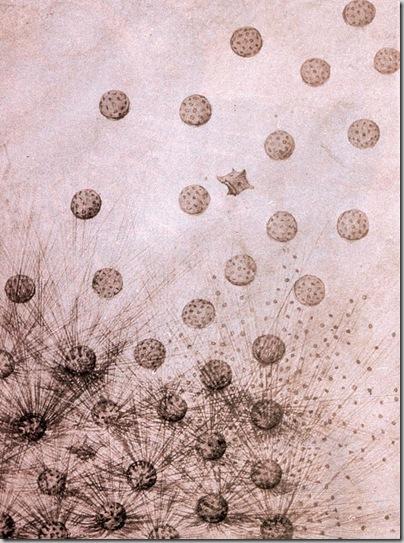
To make the bombard, or cannon, a weapon already known at the time, even more deadly, Da Vinci also designed large projectiles, comprised of round shells fitted around iron spacers and stitched inside a pliable casing. Once fired, this invention exploded into many fragments with that had greater range and impact than a single cannon-ball.
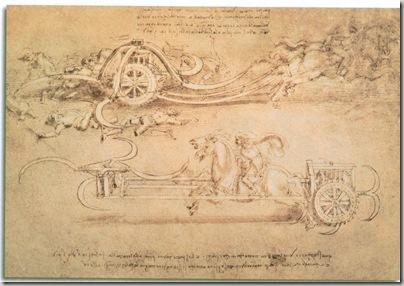
This is one of Leonardo’s most beautiful manuscripts. His sketches horse drawn reveal carriages covered with sharp, swirling blades that moved in the thick of battle slashing through everything in their wake. The rotating blades were specifically designed to sever the limbs from its victims. In one of his drawings, Da Vinci illustrated the carnage in such gruesome detail that his notation indicated that his contraption probably would wreak as much havoc on friends as on foes.

This drawing is on of the first page of the Codex Atlanticus. The drawing itself is very complete and quite fascinating, illustrating the plan of a bombard with sixteen radial cannons. The most interesting aspect of the project is the centre of the bombard itself, housing a pair of mechanical paddles and gear wheels, providing only a partial glimpse of the possibilities of massive weapon.
Reklāma
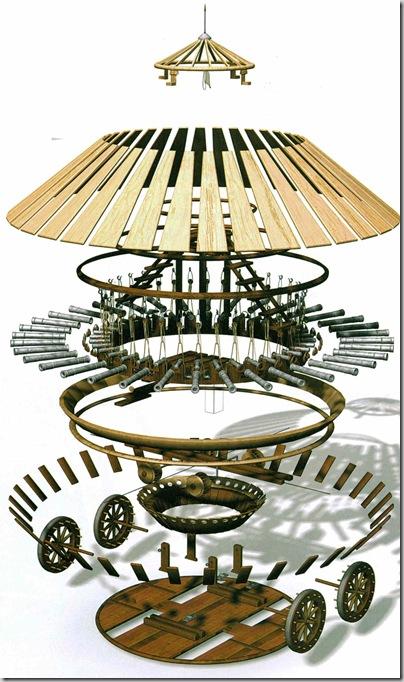
This is perhaps one of the most famous of Da Vinci’s projects. His idea of reaping panic and destruction among enemy troops was envisioned in this tortoise-shaped vehicle, reinforced with metal plates, and ringed with cannons. In a job application to the Duke of Milan, Da Vinci boasted quotI can make armoured cars, safe and unassailable, which will enter the close ranks of the enemy with their artillery, and no company of soldiers is so great that they will not break through them. And behind these the infantry will be able to follow quite unharmed and without any opposition.quot Da Vinci’s precursor to the modern tank surely could have created quotshock and awequot on the 15th-century battlefield, the design contained some serious flaws. Even with several modifications to the original plans he continued to be faced with a number of unresolved problems and eventually abandoned the project.
Leonardo designed complex and ingenious methods of defence. Here, when the walls are under attack, the soldiers hidden behind the battlements could quickly and easily ward-off enemies and their single movement by using a system of levers. As the enemy used ladders in an attempt to breach the walls, the levers were engaged to move the rails built into the walls that the ladders were leaning on, causing them to become unstable and eventually fall.
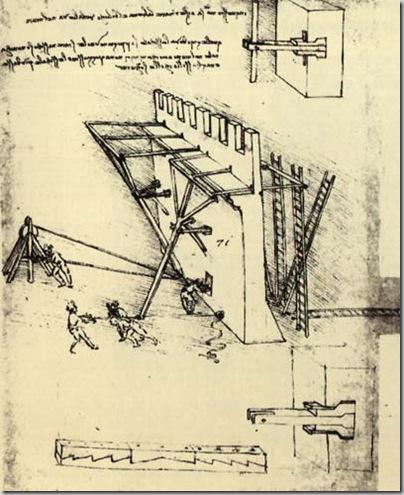
Reklāma
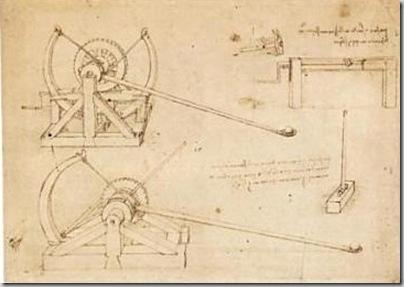
The basic design of the catapult had been in use for hundreds of years before Da Vinci embarked upon improving it. He actually came up with several different models. This particular design uses a double leaf spring to produce an enormous amount of energy in order to propel stone projectiles or incendiary materials over great distances. Loading of the two large leaf springs was accomplished using a hand crank on the side of the catapult.
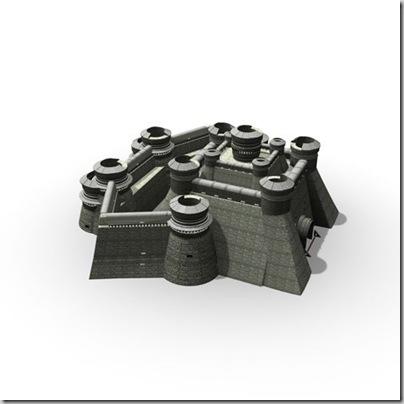
Leonardo designed this fortress with the idea of rendering it safe from the attack. The elaborate shape is innovative and presumably could have been an effective defence against the impact of deadly artillery projectiles.
Tev patiks šie raksti








